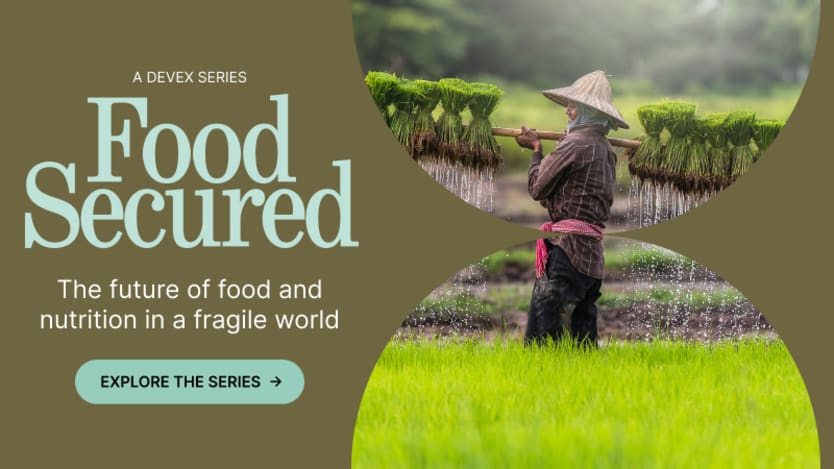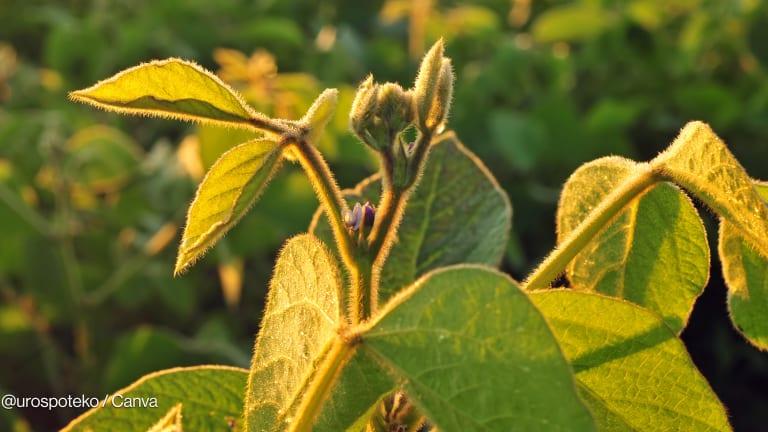
When Cyclone Freddy hit Malawi in March, deadly landslides turned roads into muddy rivers and wiped-out crops. Before Cyclone Freddy, drought and erratic rainfall decimated maize production. Like a one-two punch, these cascading climate shocks have contributed to increased food insecurity in a country where 90% of the population relies on rain-fed agriculture to survive.
In the era of climate change, extreme weather is wreaking havoc on agricultural livelihoods in Malawi and across Africa. Underneath this worrying trend is an uncomfortable truth for those of us working in the aid and agricultural sectors; Africa’s arable land has become increasingly degraded, so much so that instead of nourishing crops, it’s now a limiting factor in agricultural production at a time when the stakes couldn’t be higher.
Degraded soil
How have we arrived here? Our once-rich soil, teeming with life and nutrients, has been stripped of its vitality through overuse and improper management. What’s more, rising temperatures, prolonged droughts, and erratic rainfall — all linked to climate change — are adding to the problem by further damaging soil health.
The facts speak for themselves. Up to 65% of productive land in Africa is degraded and nearly half is affected by desertification. This isn’t just a soil problem; it's a soul problem, a reflection of our disconnection from the very earth that sustains us.
Consequently, we are pleased that the United States government, the African Union, and the Food and Agriculture Organization acknowledge this challenge by announcing a new initiative — the Vision for Adapted Crops and Soils, or VACS, initiative — which is grounded in finding new ways to produce crops across the continent.
Speaking about this new initiative, U.S. Secretary of State Anthony Blinken said: “We will never achieve food security without fertile soils and adapted and productive crops.”
This initiative presents an opportunity to transform African agriculture from the ground up. But to be effective, addressing soil health must come first. Only when the soil is restored will we see the payoff of improved inputs like adapted seeds or commercial fertilizers.
Water smart agriculture
We know that soil regeneration successfully addresses food security because we’ve seen its benefits firsthand. For example, in Central America, my, Sekai Mudonhi’s, organization, Catholic Relief Services, has been implementing a water smart agriculture approach that is helping farmers across five countries manage their soil and water to produce more, even when rainfall is unpredictable.

To date, more than 40,000 farmers have learned how to protect their soil by mulching their fields; by planting cover crops to build soil fertility; and how to apply the right fertilizer in the correct quantity at the ideal time. And they are capturing rainwater too, which boosts crop yields.
This work has expanded through CRS’ partnership with governments, the private sector, and local organizations.
During the Central American drought of 2018, we found that these types of agricultural practices, used on more than 1,300 demonstration farms, produced, on average, 43% more maize than conventional approaches. We also found that for every $1 spent on these practices, farm income increased by $2.46 — a 246% return on investment.
In Africa, these same approaches are at work. CRS’ implementation of a U.S. Agency for International Development-funded watershed project in Malawi is just one example.
By improving soil and water management inside the project’s watersheds — a watershed is an area of land that drains water into a specific body of water such as a stream or river — communities increased their average maize yields by 60%. Equally impressive is that 80% of the communities needed little or no food aid after the 2015 drought, the worst to hit the country in 35 years.
In the meantime, communities outside the project’s watersheds required a year of food aid. This approach has proved sustainable; communities have maintained their watersheds seven years after the project ended.
What these two examples share is an approach that places the farmers, the true stewards of the soil, at the center of the equation. CRS’ programs in Malawi and Central America have been successful because data, capacity-building, and behavior change have been part of the process.
Connection to farmers
As such, any initiative like VACS must ensure that policy, systems, and research are accompanied by programmatic investments that connect directly back to farmers.
Aggrey Agumya’s organization, the Forum for Agricultural Research in Africa, is already working with the African Union on the Soils Initiative for Africa, which outlines a long-term framework and action plan that will guide and support member states as they invest in restoring their soil health. The VACS initiative is an opportunity to build on this foundation. With the United Nations General Assembly this month and the United Nations Climate Change Conference around the corner, now is an ideal time to make such a framework a reality.
Make no mistake — the clock is ticking. With climate change a worsening reality in Malawi and elsewhere, another cyclone like Freddy lurks around the corner. Another drought, too.
Consequently, one of the most important things we can do to improve food security is to strengthen our soil. Only then will we have dug our way into a future where the most vulnerable people can thrive on our ever-changing planet.
Visit Food Secured —a series that explores how to save the food system and where experts share groundbreaking solutions for a sustainable and resilient future.
This content is sponsored as part of our Food Secured series, which is funded by partners. To learn more about this series and our partners, click here.










